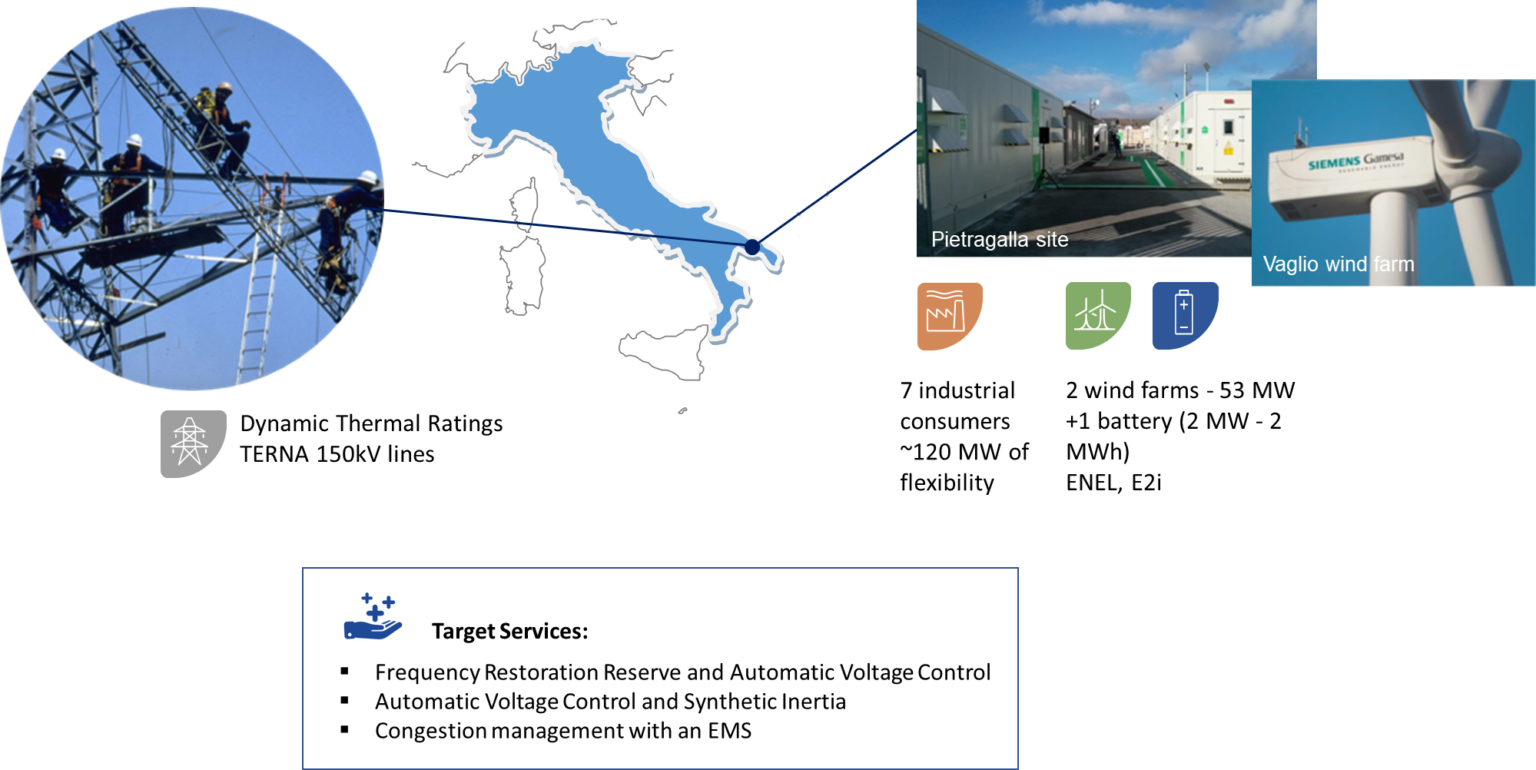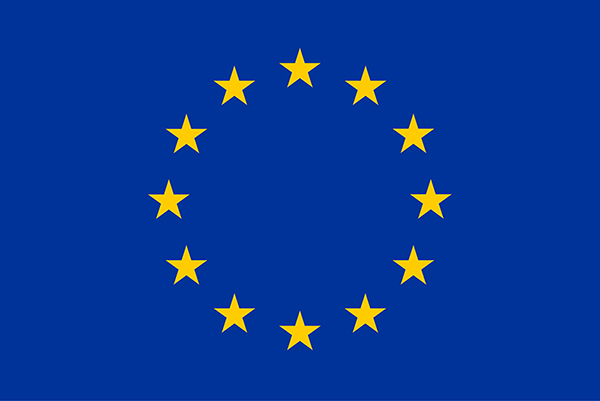Back to Osmose Work Plan | See on Demos map
WP5 – Multiple services provided by grid devices, large demand-response and RES generation coordinated in a smart management system
 Demo overview
Demo overview
 Partners involved
Partners involved
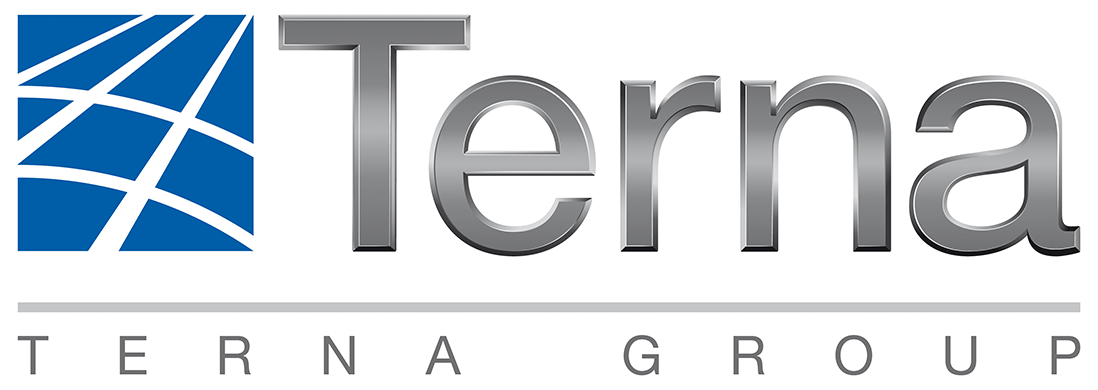

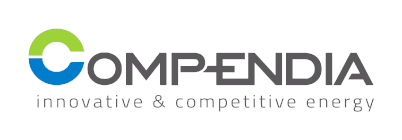


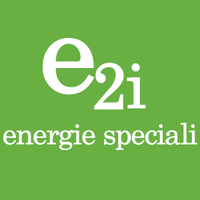
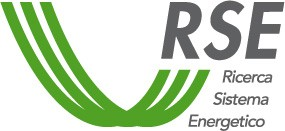
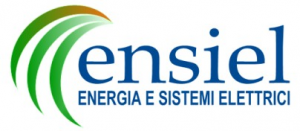



WP Leader contact: Leonardo PETROCCHI, Terna
 Context
Context
Why demonstrating services by wind farms and industrial loads?
Today most of the ancillary services are achieved by traditional power plants. Tomorrow, these plants will be less numerous and thus other providers of these flexibilities becomes necessary and could prove more cost-efficient.
Why innovative Dynamic Thermal Ratings?
DTR assess the real-time capacity of lines depending on weather conditions. To be accurate, it requires numerous sensors. Using advanced modelling features and cooperative computing could reduce the installation and maintenance costs.
Why an Energy Management System?
To ensure a cost effective congestion management, all flexibilities available should be considered. As more and more options are available (DTR, demand response…), the TSO operators need smart support to identify the best solution.
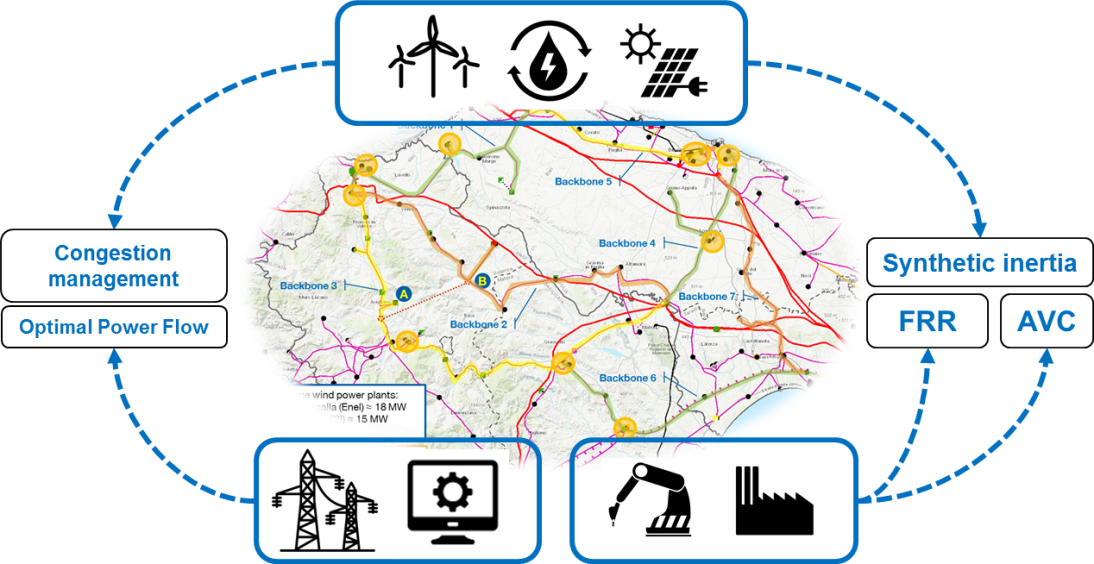
![]() Objectives
Objectives
The main goal of WP is to develop a smart management system integrating flexibility sources of market players together with flexibility sources of the TSO’s infrastructure. The demonstrator, in particular, will address the following use-cases:
- Optimal Coordination for Congestion Management, implementing an advanced Energy Management System capable of handling large amount of data in order to coordinate Power Flow Control devices and Demand Side Response (DSR) resources for congestion management on a portion of the Italian transmission grid.
- Innovative System Services from RES Plants, focusing on the provision of upward and downward Synthetic Inertia and Automatic Voltage Control by large wind/PV power plants. Innovative control algorithms will be implemented and tested with the purpose of assessing, on a real-environment framework, the reliability of this service, its effectiveness in increasing system stability with respect to power unbalances and the availability of RES power plants.
- Increasing Availability of System services from DSR through Aggregation: also if DSR technologies represent a mature, commercially viable and potentially cheaper alternative to system services provided by conventional power plants, the availability of DSR resources on the European Ancillary Services Markets has not grown yet. This use case will address, through a deeper energy audit of involved customer’s productive process, the implementation and testing of Frequency Restoration Reserve and Automatic Voltage Control provided by consumers, with a focus on the role of HV aggregator as key player to increase DSR availability.
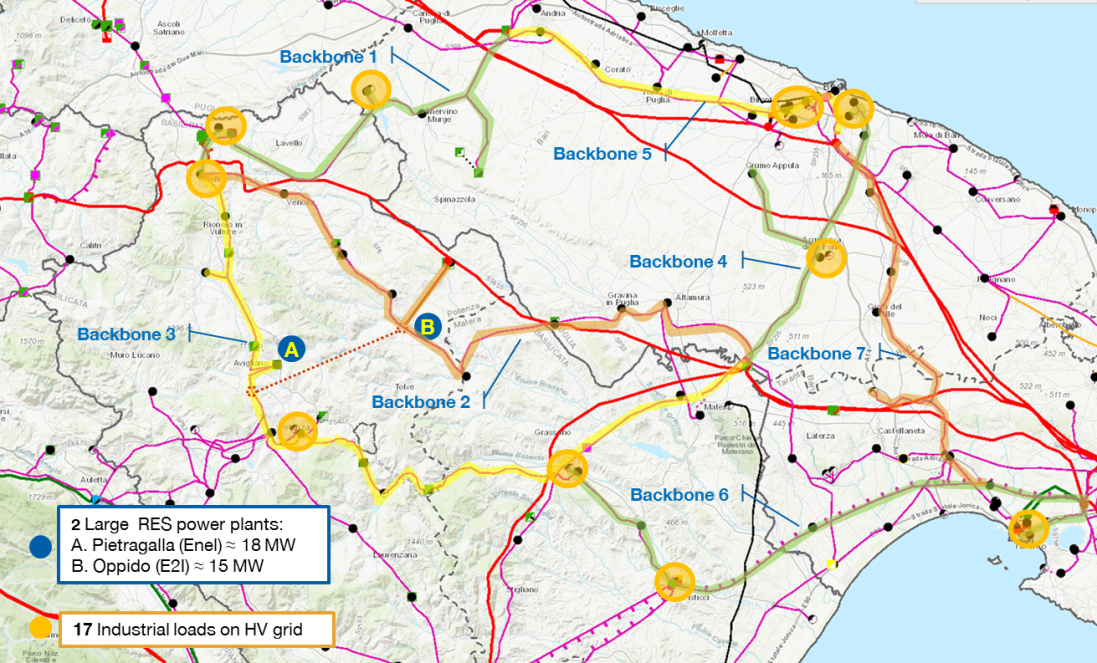
![]() WP status (December 2021)
WP status (December 2021)
On DSR side targeting congestion management (CM), aFRR and automatic voltage control, six industrial test sites are currently being tested: so far 112 MWh of energy have been used for congestion management.
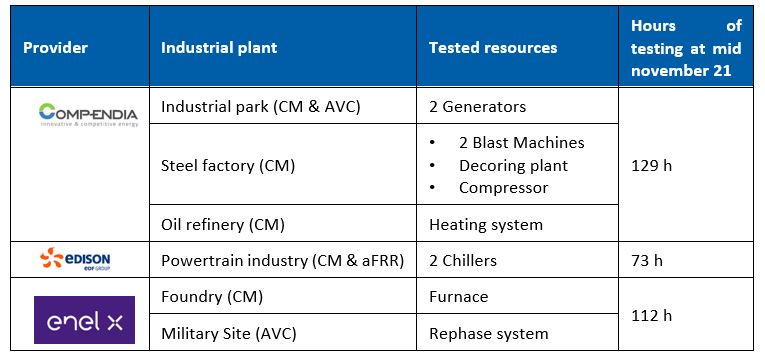
On the RES side, two wind parks – one including BESS- are currently experimenting automatic voltage control and synthetic inertia. The first preliminary results on AVC are promising, with plants responding correctly to setpoints requests, and providing reactive power within 8 to 40 seconds according to conditions.
![]() Deliverables and publications for download
Deliverables and publications for download
- D5.1 Techno-economic analysis of DSR and RES selected services: Summarize the results of the analysis of DSR and RES flexibilities available in the WP5 demo site and include the specification of power electronic devices necessary to provide ancillary services to the grid, also for the case of multiservice provision.
- Check out the related publications presented at AEIT Conference 2021

